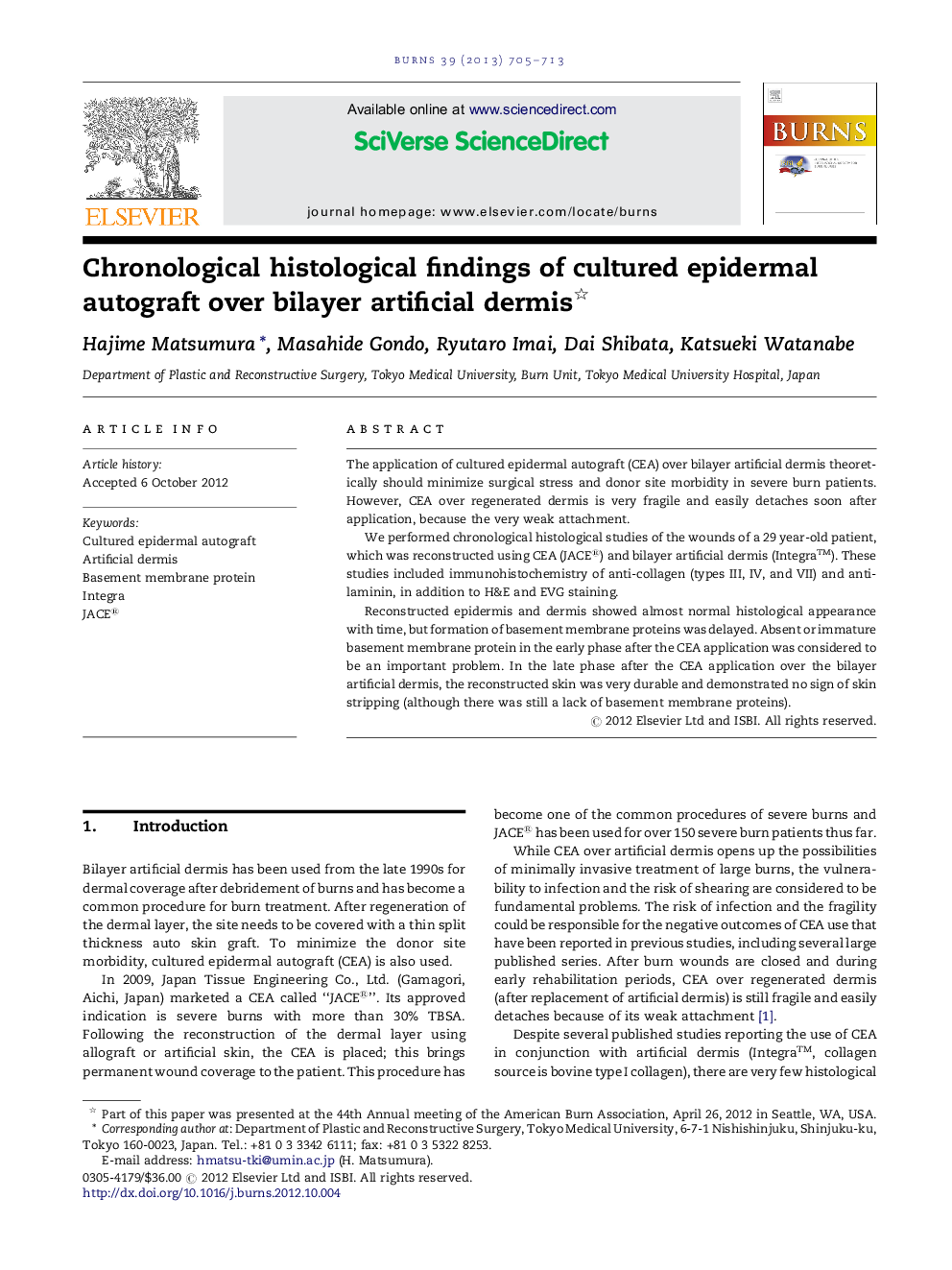| Article ID | Journal | Published Year | Pages | File Type |
|---|---|---|---|---|
| 3104972 | Burns | 2013 | 9 Pages |
The application of cultured epidermal autograft (CEA) over bilayer artificial dermis theoretically should minimize surgical stress and donor site morbidity in severe burn patients. However, CEA over regenerated dermis is very fragile and easily detaches soon after application, because the very weak attachment.We performed chronological histological studies of the wounds of a 29 year-old patient, which was reconstructed using CEA (JACE®) and bilayer artificial dermis (Integra™). These studies included immunohistochemistry of anti-collagen (types III, IV, and VII) and anti-laminin, in addition to H&E and EVG staining.Reconstructed epidermis and dermis showed almost normal histological appearance with time, but formation of basement membrane proteins was delayed. Absent or immature basement membrane protein in the early phase after the CEA application was considered to be an important problem. In the late phase after the CEA application over the bilayer artificial dermis, the reconstructed skin was very durable and demonstrated no sign of skin stripping (although there was still a lack of basement membrane proteins).
